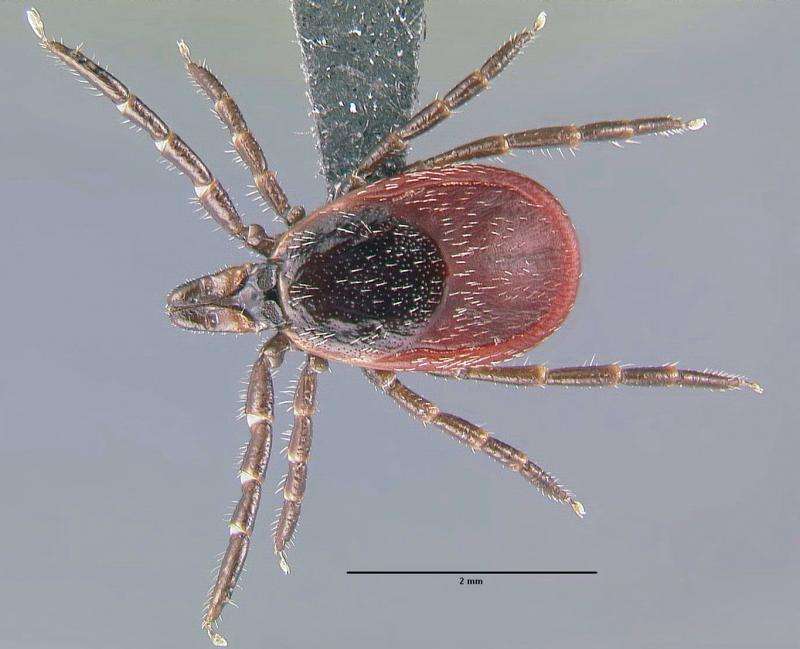Ticks that transmit Lyme disease reported in nearly half of all US counties

Lyme disease is transmitted by the blacklegged tick (Ixodes scapularis) and the western blacklegged tick (Ixodes pacificus), and the range of these ticks is spreading, according to research published in the Journal of Medical Entomology.
Some symptoms of Lyme disease include fever, headache, and fatigue, all of which can be mistaken for the common flu, so medical personnel need to know where these ticks are found in order to make a correct diagnosis. Unfortunately, the range of blacklegged ticks had not been re-evaluated in nearly two decades, until now.
Dr. Rebecca Eisen, a research biologist at the U.S. Centers for Disease Control, observed that the last comprehensive survey of blacklegged tick distribution was published in 1998. To remedy this, she and her colleagues performed a new survey to establish the current geographic distribution.
The team used surveillance methods similar to those used in 1998 so that they would be able to accurately judge the degree to which the distribution of these ticks had changed. Using the gathered data, they figured out which counties had established populations, which ones had one or more reports of a blacklegged ticks, and which ones had none.
They found that the blacklegged tick has been reported in more than 45% of U.S. counties, compared to 30% of counties in 1998. Even more alarming, the blacklegged tick is now considered established in twice the number of counties as in 1998.

Most of the geographic expansion of the blacklegged tick appears to be in the northern U.S., while populations in southern states have remained relatively stable. The range of the western blacklegged tick only increased from 3.4% to 3.6% of counties.
"This study shows that the distribution of Lyme disease vectors has changed substantially over the last nearly two decades and highlights areas where risk for human exposure to ticks has changed during that time," Dr. Eisen said. "The observed range expansion of the ticks highlights a need for continuing and enhancing vector surveillance efforts, particularly along the leading edges of range expansion."
More information: "County-Scale Distribution of Ixodes scapularis and Ixodes pacificus (Acari: Ixodidae) in the Continental United States," jme.oxfordjournals.org/content … 016/01/08/jme.tjv237.



















